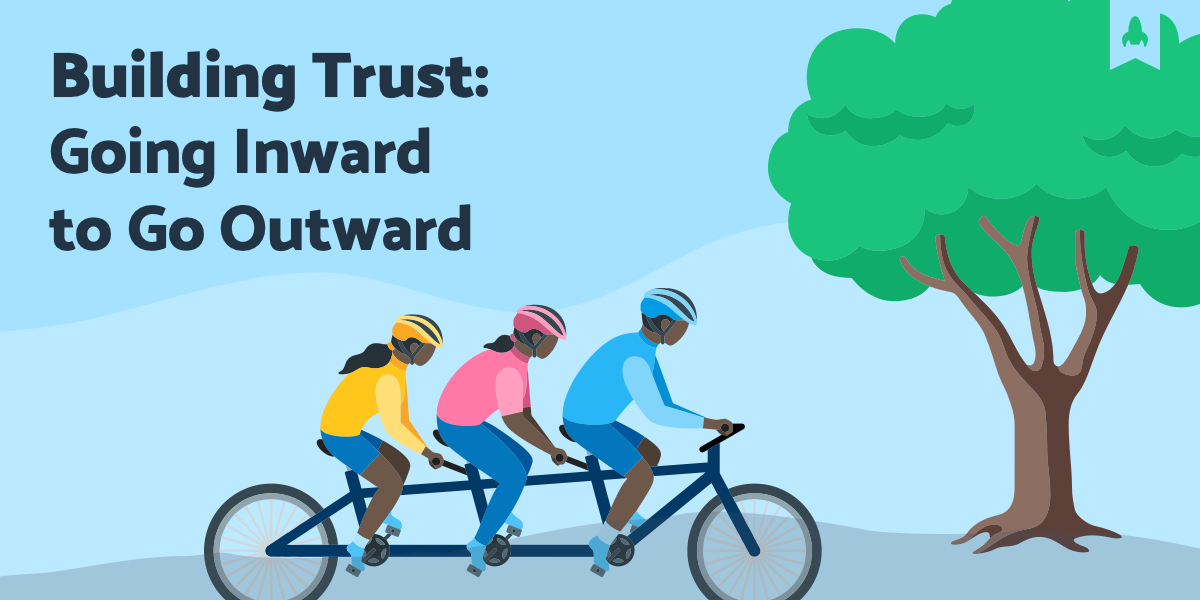


Before we can focus on relationships with others, we must first look inside ourselves. Carolyn Beardsley, instructional coach in Austin, Texas, re-frames trust-building as a continuous cycle of self-reflection and reaching out to others.
T
rust is a vulnerable act of bringing forth something of you and extending it to someone else with the ultimate goal of connection. When I think about trust, memories of old school “show and tell” come to mind. Sometimes it’s well received and sometimes it isn’t. Yet, the show and tell of trust must keep going.
When thinking of my role as a coach and how I build trust with teachers, I’ve found it’s best to go inward to go outward.
Going inward: introspect on what works for you
To go inward, we need to explore two questions: What makes you trust someone? And what makes you not trust someone? Is it their words, their actions, or a combination of both? What does it look like, sound like, and feel like? Often, when I begin to think about trust, I turn to Stephen M. R. Covey’s 13 Behaviors of High-Trust Leaders to help me get clear on what trust can be, and what it isn’t.
I go inward to see where my strengths lie and where I can grow. This process has helped me develop in a number of ways. I’m a recovering over-deliverer and I’ve had to learn to simplify my promises so that they are realistic and doable. I needed to do this so that I can keep my commitments—which is now a strength of mine.
On the flip side, I’ve discovered that I’m a listen-to-respond person. I am currently learning to press the brakes, be present, and open my mind up to where I listen to learn. In both instances, taking the time to go inward leads me to action steps to go outwards, which is a skill that supports my coaching work.
Going outward: build trust with accountability
To start going outward, we also need to explore two questions: How do you want to show up for others? And how will you connect with others?
Oddly enough, the first question is often answered by going inward. For instance, if you want to show up as someone who is accountable, you will go forward showcasing specific qualities that represent accountability such as taking ownership of a project, following through on tasks, meeting deadlines, and so on. The second question, however, often propels you into territory beyond your control.
In Elena Aguilar’s Spheres of Control, she explains that there are things we can control, things we can influence, and things that are beyond both our control and influence. How you connect with others is within your control, but how others receive and respond to it is outside of your control.
Whether you use get-to-know you surveys, discover a teachers’ likes and dislikes, share your interests, or show up consistently, you might be met with rave reviews or mixed reviews. Having found myself many times in that expansive outer circle of what is outside my control and influence, I return to the center and press forward.
Final note
The “show and tell of trust” is a continuous action: a consistent inward dive and outward display. As an instructional coach, it’s important to set time aside to go inward throughout the school year, get clear on the person you are and how you want to show up—bearing in mind that who you are can change over time. Then go outward to connect and build trust.
About our Guest Blogger
Carolyn Beardsley is an Instructional Coach with Region 13 Education Service Center in Austin, Texas. During her 21 years in education, Carolyn has been an elementary teacher, a campus instructional coach, a community college instructor, Texas Lesson Study facilitator, and a regional instructional coach/education specialist.
{{cta(‘352a410e-db79-4f33-a482-d301e8041965′,’justifycenter’)}}
Illustration by Natasha Remarchuk from Icons8.
Stay Connected
News, articles, and tips for meeting your district's goals - delivered to your inbox.








